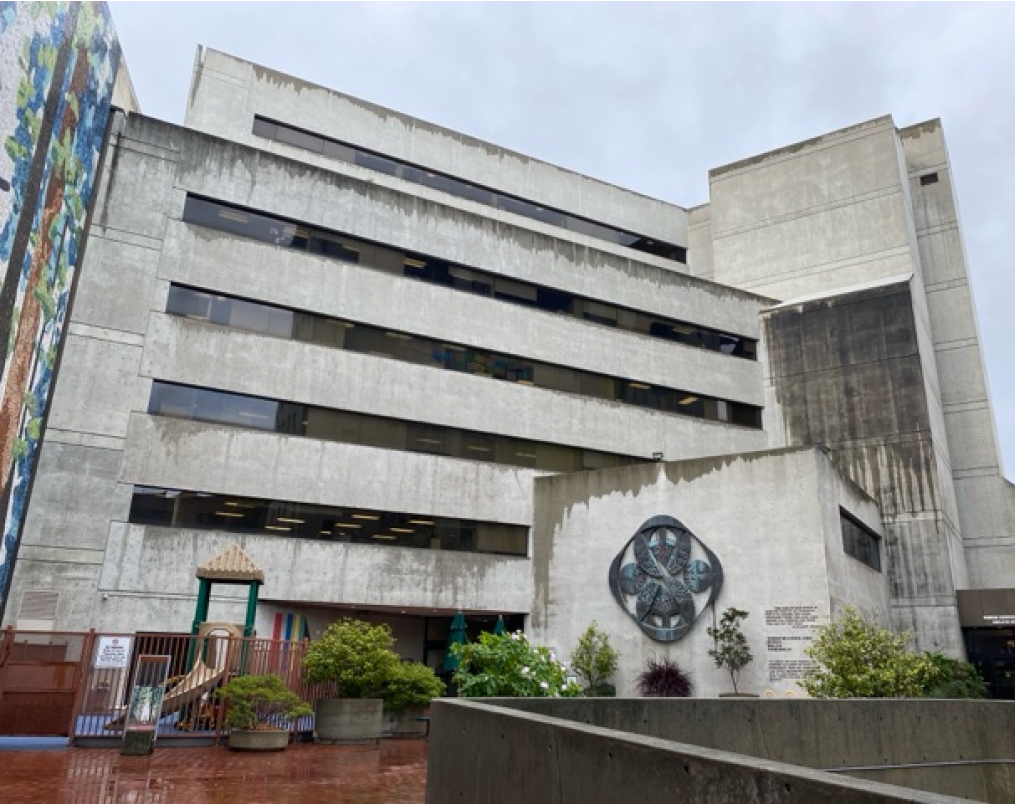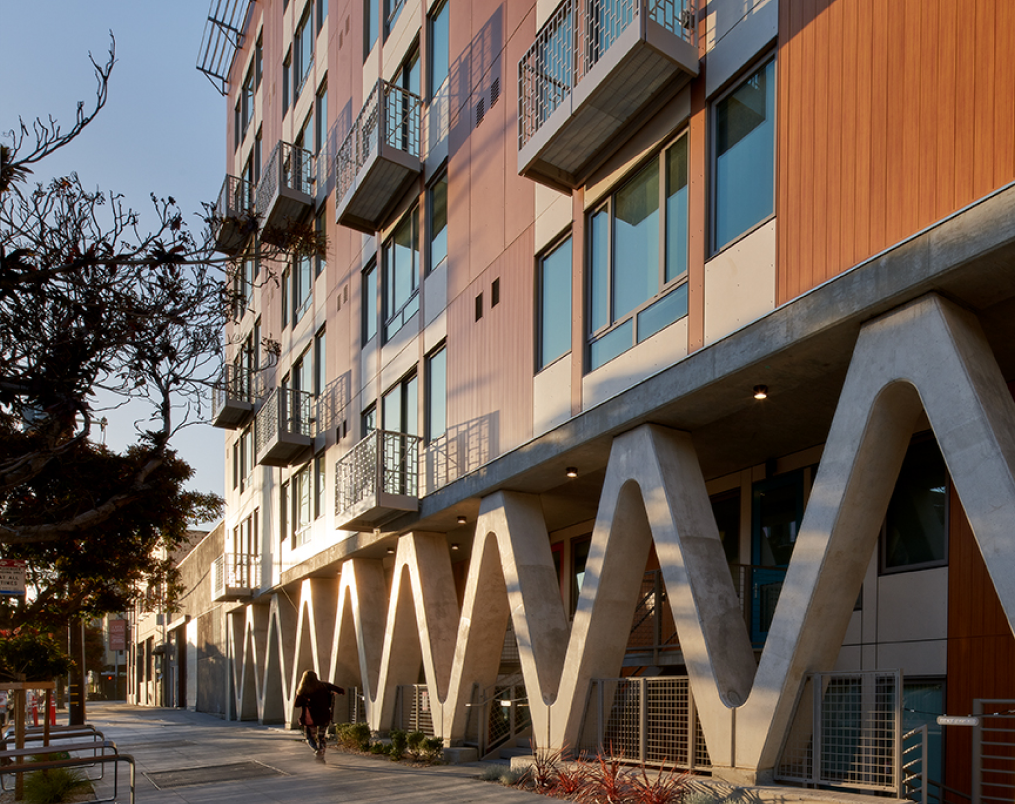|
Project Name |
Description |
|---|---|
|
DPH – Chinatown Public Health Center Seismic Retrofit |
Chinatown Public Health Center is one of DPH’s most seismically vulnerable clinics with a Seismic Hazard Rating of 4. This project addresses seismic issues and makes a number of critical renovations to allow the co-location and integration of primary care medical and mental health services, along with dental, social services, and other ancillary services. In addition, DPH will relocate a specialty mental health program from leased space into this clinic. The project includes infrastructure improvements such as modernization of outdated equipment, upgrades and retrofits of building automation systems, and repairs to HVAC controls. Construction documents for seismic renovation and modernization of the clinic are complete. The project budget is estimated at $76.1 million, with $5 million from the Mental Health Services Act and the rest funded by the 2024 Healthy, Safe and Vibrant San Francisco G.O. Bond. |
|
DPH – ZSFG Building 3 Retrofit |
Building 3 on the ZSFG Campus is an aging and seismically deficient 6-story building originally constructed in 1964. This retrofit and renovation project includes a seismic upgrade to the upper floors, ADA improvements, and new finishes for administrative functions relocating from 101 Grove Street and other seismically vulnerable brick buildings on the ZSFG Campus. The project budget is estimated at $40 million and will be funded by the 2024 Healthy, Safe and Vibrant San Francisco G.O. Bond. |
|
DPH – City Clinic Relocation |
City Clinic is a vital sexual health resource for all San Franciscans, providing low barrier access to rapid HIV testing, HIV pre- and post-exposure prophylaxis, as well as sexually transmitted infections (STI) screening and treatment. The clinic also serves a central role in connecting patients to outside services. City Clinic currently operates out of a nearly 100-year-old three-story converted firehouse that is not suited to clinic and patient needs. It is not conducive to optimal patient care, is unsafe, and is not fully accessible for employees and patients. The building has insufficient space for City Clinic’s lab, consultation rooms are non-ADA compliant, and the building lacks air conditioning meaning the clinic reaches unsafe temperatures during heat waves. Once the City Clinic relocation is completed, the City will evaluate whether a sale, public-private partnership, or City-driven retrofit project will make for the best use of the current space at 356 7th Street and funds required. The project budget is estimated at $28 million and will be funded by the 2024 Healthy, Safe and Vibrant San Francisco G.O. Bond. |
|
DPH – Critical Infrastructure Repairs |
Both the LHH and ZSFG campuses continue to have several critical repair needs that are too large in scope for the City’s Pay-As-You-Go Program. At ZSFG, several buildings are over 100 years old and campus needs include exterior building repairs, IT infrastructure upgrades, electrical improvements, elevator repairs, clinical equipment upgrades, and security enhancements. At LHH, the new hospital building is beginning to show unanticipated renewal needs. The broader LHH campus requires critical infrastructure enhancements to improve onsite efficiency and ensure safe and appropriate conditions in staff and patient care areas. Needs include fuel line leak repairs, security enhancements, HVAC replacements, IT infrastructure upgrades, elevator repairs, and exterior building repairs. These repair needs will receive $66 million from the 2024 Healthy, Safe and Vibrant San Francisco G.O. Bond. |
|
DPH – Silver Avenue Family |
Built in the early 1960s, the current Silver Avenue Family Health Center is not conducive to a state-of-the-art collaborative working environment. This renovation will continue DPH’s efforts to modernize aging neighborhood health centers which began with the 2016 Public Health and Safety Bond, creating space for co-location and integration of primary care medical and mental health services, along with dental, social services, and other ancillary services. The project budget is estimated at over $100 million, planned to be funded by the 2030 Public Health G.O. Bond, pending voter approval. |
|
DPH – Treasure Island Residential Step-Down Facility |
In collaboration with the Treasure Island Development Authority, the Mayor’s Office on Housing and Community Development, and Mercy Housing, DPH is initiating development of a Substance Use Disorder (SUD) Residential Step-Down Facility to be located on Treasure Island. This facility will add at least 70 beds to provide care for a period of one to two years in the most appropriate and least restrictive setting after clients complete their initial 90-day SUD medically necessary residential treatment. The Treasure Island Residential Step-Down Facility will help ensure that clients have the necessary continuation of support for them to maintain and strengthen their recovery. Construction documents for this project are complete and construction is expected to begin in mid-2026. The project budget is estimated at $72 million, funded by Treasure Island developer fees, Prop C (Our City Our Home), and the 2020 Health & Recovery G.O. Bond. |
| HSA – Relocation of HSA Headquarter |
Built in 1978 and home to a wide range of HSA programs, administrative and executive staff - as well as a public-facing service center - 170 Otis Street was deemed seismically deficient by DPW in 2018. Since that time, HSA has, in collaboration with a variety of City partners, pursued the acquisition of a new building in the southeast of the City, where a significant portion of its clients reside. DPW is performing a seismic evaluation on a space in the Bayview district which appears suitable for HSA. The site would provide space for both back-office and service center operations, as well as parking. The agency foresees placing staff there to serve the following programs/divisions: Medi-Cal and CalFresh eligibility, County Adult Assistance Program (CAAP), Family and Children’s Services, Workforce Development, Economic Support and Self-Sufficiency and Disability and Aging Services. The remaining administrative functions and executive offices at 170 Otis would be co-located with other HSA administrative functions moving to leased space at 1455 Market. This project may be funded in part with revenues from the sale of 170 Otis. In addition, the City plans to issue $55 million in FY2026 Certificates of Participation to support the purchase of a new building and tenant improvement costs |
|
HSH – 2024 Bond Project |
Measure B on the November 2024 ballot includes funding to “acquire, construct, finance or improve shelter or interim housing sites to reduce unsheltered homelessness, particularly for families.” Potential projects could include 1) expansion of existing shelter sites to add bed capacity to the City’s homelessness response system, 2) acquisition and build out of one or more existing, structurally-improved buildings to add bed capacity and/or vacate one or more City-owned shelters with an SHR 4 ; 3) co-development and co-location of a shelter within a supportive housing project to leverage affordable housing financing and tax credits; and 4) a combination thereof to maximize bond proceeds and add shelter bed capacity. These projects will receive $50 million from the 2024 Healthy, Safe and Vibrant San Francisco G.O. Bond. |
|

|

|

